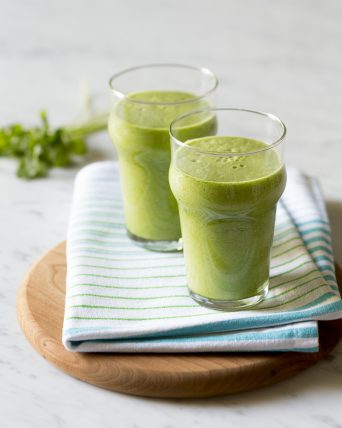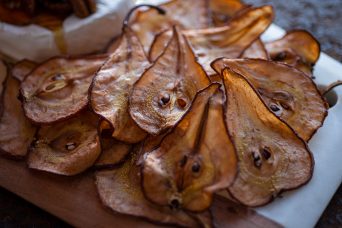Do you ever just wait a little too long with that pear sitting in your fruit bowl, and all of a sudden it’s much softer than you expected? Don’t throw it away! We have plenty of recipes and ideas to make sure you get your money’s worth from every part of your pears in all stages of ripeness.
Overripe Pears
Though some of your overripe pears may be a little too mushy for just eating on their own, they are perfect for things like smoothies and muffins. Throwing a pear into a smoothie is a great way to get more fiber into your diet, and they’re a low glycemic food meaning they digest and absorb slower, keeping you feeling full for longer. Or if you’re feeling a little more adventurous, this pear lassi recipe with cardamom and yogurt is perfect.


If you have a bunch of pears to use up that are either too ripe, or you just have too many pears to eat all at once, pear butter is a fantastic way to utilize those in a delicious and easy to store way.
Peels and Cores
It’s not just being able to use overripe pears that make them a zero waste food, it’s the fact that we can use the entire pear for other recipes. Did you just make a pear tart, or poached pears and now you’re just going to throw away the peels and cores? Don’t throw those away either!
Lots of pear peels on hand from poached pears are perfect to make pear peel sugar. This sugar is great to add a flavored topping on desserts, or use in place of granulated sugar in baked goods such as these muffins. You can also substitute pear peels for sliced pears in these spiced pear chips.

You can also use the peels and cores to make a syrup that is delicious on pancakes or waffles, or even to add into a marinade for ribs. And if syrup is not really your thing, you can also use all those scraps to make a pear vinegar, great for dressings or anything else you would use apple cider vinegar for.
Storage Tips for your Pears
- Leave firm, unripe pears at room temperature so that they can ripen.
- Check the Neck for Ripeness daily, by applying gentle pressure to the neck, or stem end, of the pear with your thumb. If it yields to pressure, then it’s ripe and ready to eat!
- Once the pear is ripe, it can be refrigerated to slow the ripening process and saved for use up to five days later.
Keep a fresh fruit fresh
Like many fruits, the flesh of cut or peeled pears will eventually brown. This natural oxidation process won’t affect the taste or quality. However, to keep your pears looking appetizing and to prevent browning, dip them in a mild solution of 50% water and 50% lemon juice!
Remember, don’t refrigerate an unripe pear!
Ripened pears can be used at once or put under refrigeration (35º to 45º F) until you want to use them. Refrigeration will delay further ripening but will not stop it altogether, giving you adequate time to include fresh pears in your menu planning. Remember, pears need to ripen at room temperature, so don’t refrigerate an unripe pear!